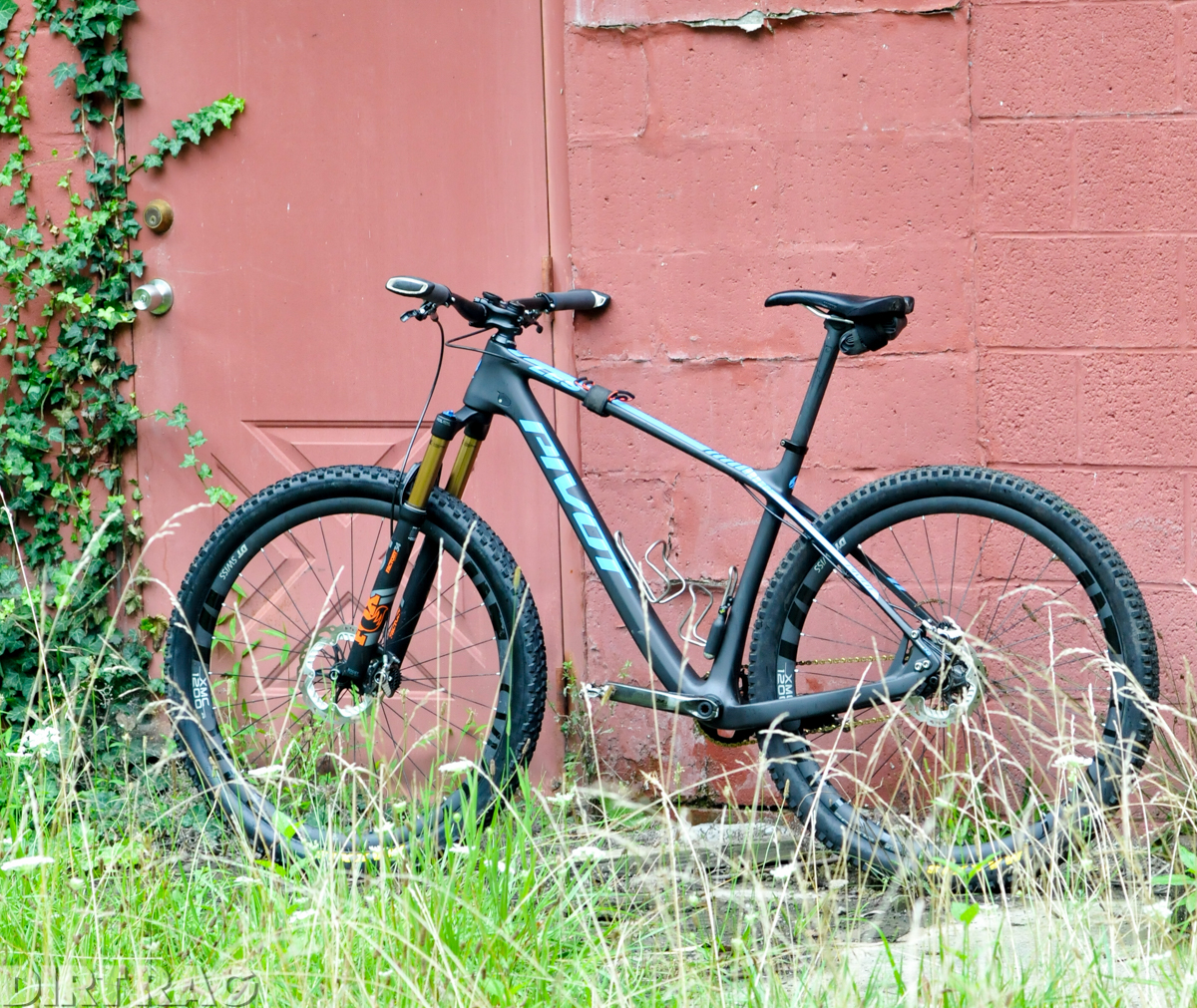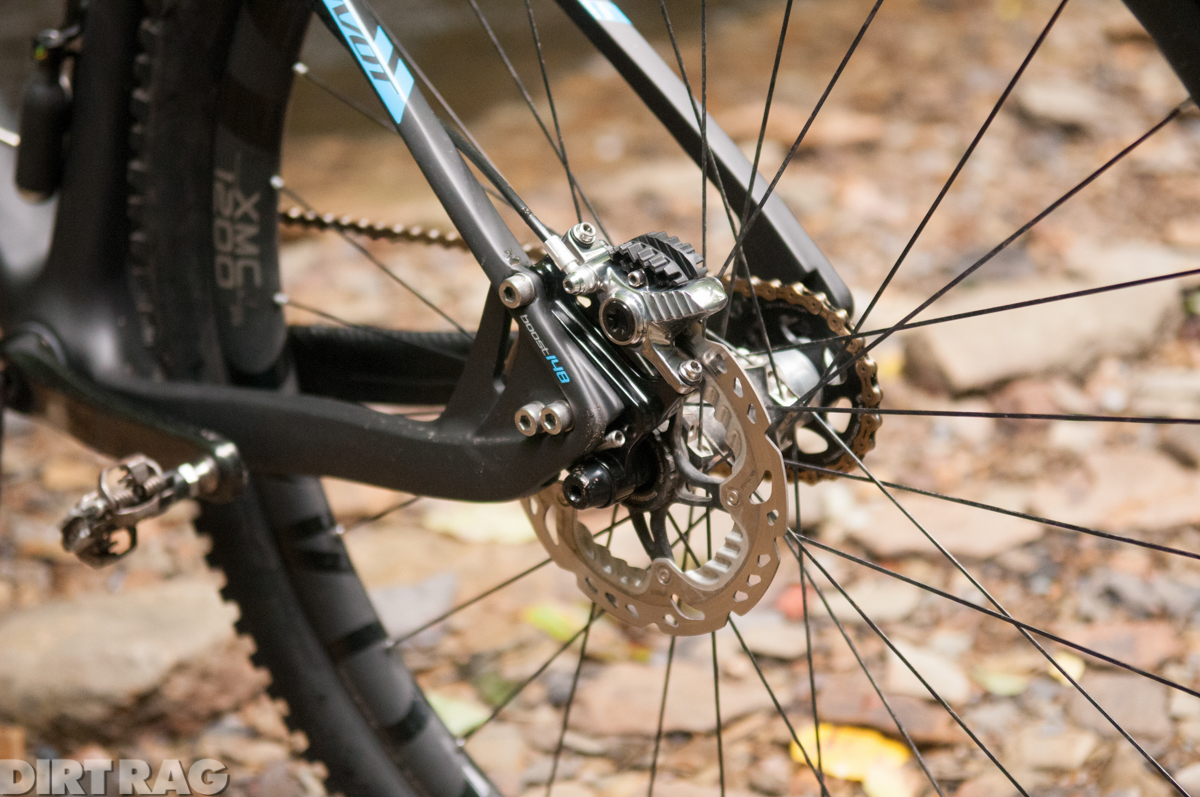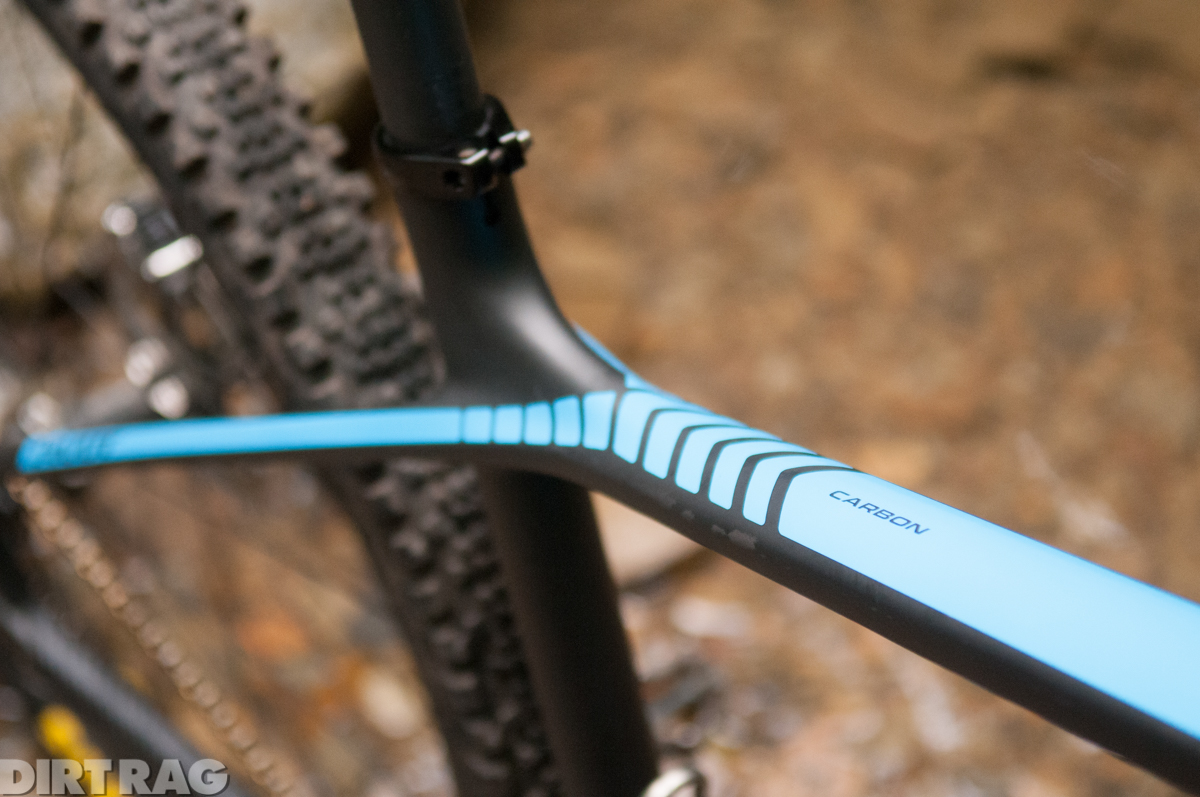Review: 2017 Pivot LES
Originally posted on December 14, 2017 at 1:04 amTester: Scott Williams
Age: 31
Height: 5’10”
Weight: 175 lbs.
Inseam: 32”
When the Pivot LES first stormed bike shop floors in 2012, it was obvious Chris Cocalis of Pivot Cycles was ahead of the curve offering a hardtail with a short chainstay and slack, for cross-country standards, 69.5 degree head angle with a 100mm travel fork. The LES is more than happy being a lightweight race machine, but if you would rather get loose and really push the limits of a hardtail, you’re in luck. Cocalis designed the LES to accommodate fork travel up to 130 mm for all your chundry descending desires. The LES is kind of like the love child between a nimble NORBA cross-country race bike and a point-and-shoot all-mountain gravity slayer.
Having owned two prior-generation LES bikes and now riding this second-gen as my review bike, I’ve managed to cover a good mix of ground aboard the LES. From gravel roads and cactus-laden deserts to snow drifts on frozen ponds, the LES bounced between fully rigid, 29plus front/27plus rear, 27plus and, of course, as a 29er with knobs of all girths. The point is, at whatever task I asked it perform, the LES comfortably obliged. The LES brought me a 2nd place overall finish in the Men’s National Ultra Endurance (NUE) Marathon SS class, 3rd place SS finish at the Enduro Stage of the Trans-Sylvania Epic, served as my commuter to Dirt Rag HQ and will soon be built up as my gravel grinder with Jones bars.

The Bike
The Pivot LES can be run with or without dangly bits and a pie plate out back, and I don’t mean by tossing a creaky old eccentric bottom bracket inside the shell either. Cocalis specifically designed the Swinger sliding dropout system with indexing screws for a quiet and simple singlespeed retention system. So, naturally, for our review, I requested the Pivot LES in its simplest form, as a singlespeed. The LES is available as a frame for $1,999 and complete at various price point packages from $3,699 to $8,799. Our build was based off the Team XTR 1x package with the 120 mm Fox 34 upgrade so that I could run the Reynolds/Industry Nine 27plus wheelset. It also included XTR Trail brakes, the DT Swiss carbon 29er wheelset and Pivot’s Phoenix Component System rounded out the cockpit. Additionally, the LES came stock with a set of Race Face Next SL G4 cranks; however, during the review the pedal inserts began to delaminate from the crank arm, and after experiencing this on my personal bike last year and knowing what comes next, I pulled them off right away. Race Face promptly responded by sending its new Next R cranks as a replacement, which are a more trail oriented crankset; however, I swapped to a set of XTR cranks, and haven’t installed the replacement cranks.
The biggest change for the current LES model from prior generations is the addition of Boost spacing. Additionally, the Swinger dropout system saw a minor revision to help reduce costs associated with switching between gears and singlespeed. Prior models had two completely separate dropouts held in place by four M6 bolts. Now, with the Swinger II system, there is one set of dropouts with five M6 bolts, and you simply change the mounting hardware to go from gears to singlespeed. Other notable upgrades include full-length internal cable routing, internal Di2 integration, internal dropper routing and a reduction of 50 grams in the frame itself.

The Ride
There was some overlap time between the carbon Honzo that I reviewed in issue #198 and the LES. This opportunity proved to be a good way to truly compare and contrast the two bikes, as they are often next to one another on the new bike wish list.
Without a doubt the Honzo sits more on the trail/all-mountain side of the spectrum with its slacker head angle, shorter chainstays and longer wheelbase. In my opinion, it’s going to excel over the LES when it comes time for long, wide-open flowy descents. However, with only a single bottle mount, you’re going to need to get creative for any long days in the saddle. It’s also not a bike that I would enjoy riding a lot of gravel on, making it less versatile than the LES.
The LES, on the other hand, sits more on the everyday rider end of the market. The shorter wheelbase of the LES allows more maneuverability within tight and twisty singletrack that’s often seen here in the East Coast. The head angle is slack enough to handle the technical terrain but it’s not quite as exaggerated as the Honzo, making it more enjoyable when you are not pointed downhill. Bottom bracket height over technical trail was another big difference I noticed between the two bikes. Oddly enough, they ended up being very similar on paper, but likely due to the longer front end of the Honzo, I found myself having to be more cognizant of pedal strikes than I did on the LES. Additionally, with the LES you are given two bottle mounts within the front triangle, at least for sizes M-XL. One item that I did not like about the LES was the internally routed rear brake line. This created a lot of aggravating clickity-clacks within the top tube, so much so that I experimented with various noise reduction solutions.

Boost adds additional 27plus capabilities to the LES. The prior generation could fit a 2.8 inch tire, but it wasn’t pretty. There were paper-thin clearances with minimal rim and tire combinations that worked. Now, you can run a 2.8 on a 40 mm rim in the rear. I would advise keeping an eye out for any rubbing on the stays if you’re running 27plus and the chainstays in the shortest setting. The clearance is there, but it is closer than what I would prefer to run, especially with a wheel that has some flex to it. The 27.5 x 2.8 setup also dropped the bottom bracket height down a half inch, which was quickly noticed in technical areas of trail; even with the 120 mm up front, the roughly 12 inches of bottom bracket height was not enough. When I contacted Cocalis regarding the problem, he provided me the 17 mm lower headset cup that comes with a few other Pivot models. It helped raise the bottom bracket height back up to what felt “normal” for 27plus use, but produced unwieldy handling with the 29er wheels.

Conclusion
This is all about having fun, and, to me, I prefer pushing the boundaries on a hardtail versus underutilizing a full-suspension. And singlespeed, it’s a mindless “just go ride” mentality that syncs with my inner kid. This combination has served as quite the platform for improving both my fitness and technical abilities, something that I am grateful for every time I throw leg over my bike.
As I mentioned earlier, I owned two of the previous generation LES bikes, one set up singlespeed, one with gears. In fact, the only bike I owned for the last two years was the LES. After a few months and over 1,000 mixed-surface miles on the second generation, the LES continues to be the best all-around hardtail in my opinion. The bike packs on versatility for whichever end of the mountain bike spectrum you choose. Plus, singlespeed, gears, light and fast, slack and plush. Hell, it even was the bike of choice by the late Mike Hall to help him secure a Tour Divide win, twice.
Specs:
Reach: 16.7”
Stack: 24.8”
Top Tube: 24.5”
Head Tube: 69.5º (100 mm fork)
Seat Tube: 72.5º
BB Height: 12.1”
Chainstays: 16.9” – 17.5”
Weight: 1,450 grams for frame and singlespeed dropouts, (22 lbs. complete)
Price: $1,999 (frame only)
Sizes: S, M, L (tested), XL
